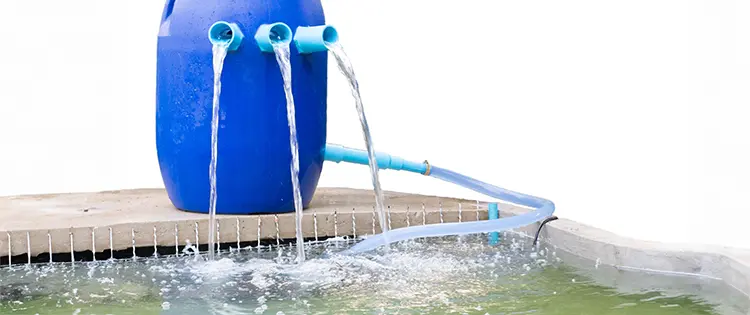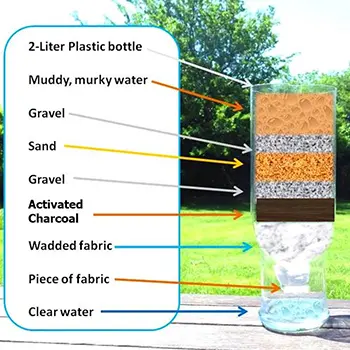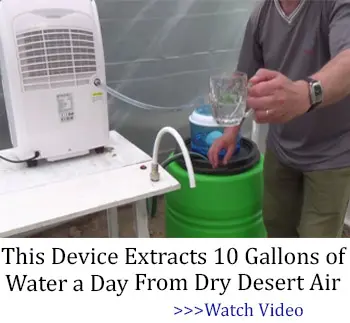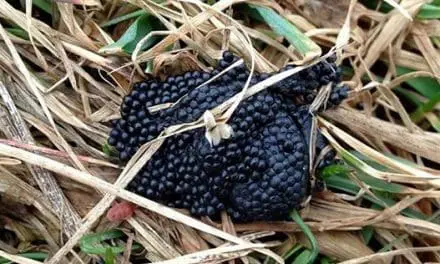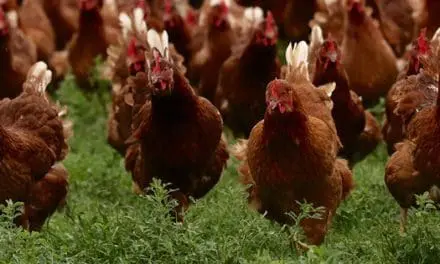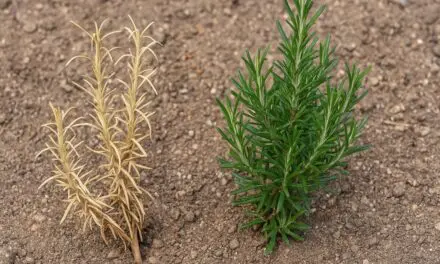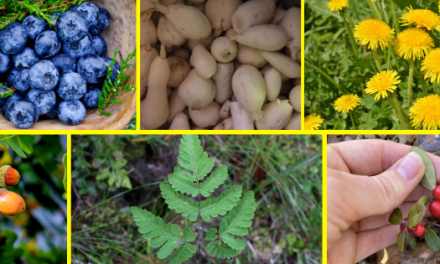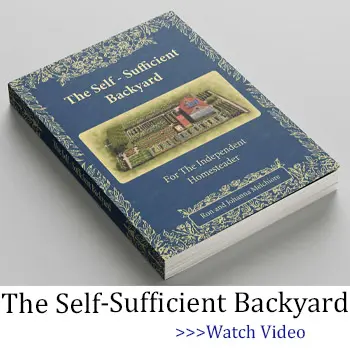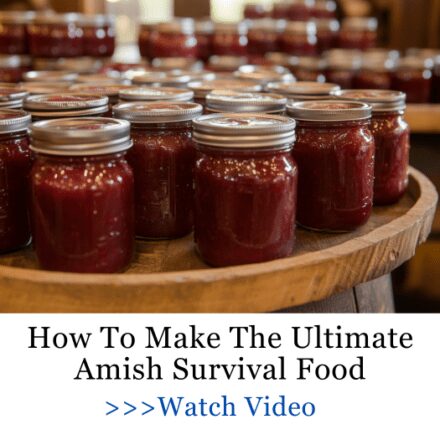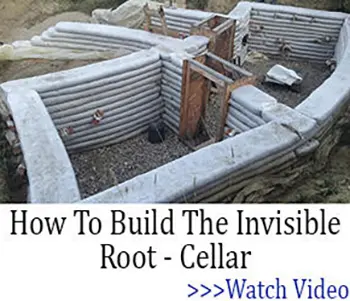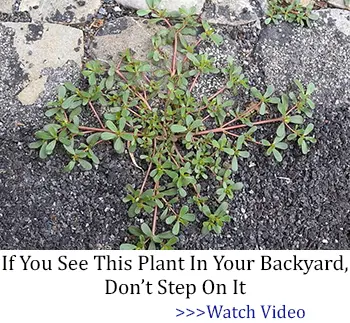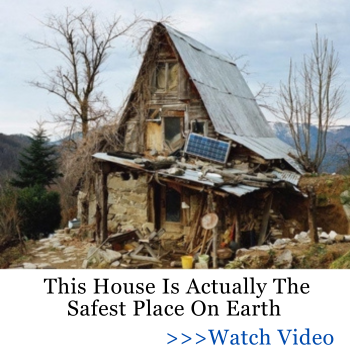There are many variations on water filters you can buy, but in an emergency, you can improvise your own. This is especially important during a power outage or any other emergency that makes water hard to come by. But what are the best DIY water filters?
The obvious way to collect water in an emergency is from natural water sources. This includes rainwater, water from springs and creeks and rivers, and water from ponds and lakes. The problem is that all of these natural sources are exposed to various contaminants and pollutants to varying degrees.
What a DIY Water Filter Won’t Do
A water filter you make yourself can effectively remove particles from water. This helps clear up any discoloration or cloudiness. The bad news is that clear water is not necessarily pure. There can still be bacteria in the water so think of DIY water filtration as a big first step to pure water.
The final step should usually be boiling or the use of water treatments to kill any and all bacteria.
Water Filter 101
A DIY water filter usually has 4 basic layers to effectively clarify water. These layers are usually kept in a bucket, plastic bottle, or any container that can hold them together. Here are the basics:
Fabric
Fabric is the final filter. After you pour your cloudy or dirty water into the filter, do a final filter. Use a piece of fabric or wadded material for this last step. This fabric is usually at the bottom of the filter.
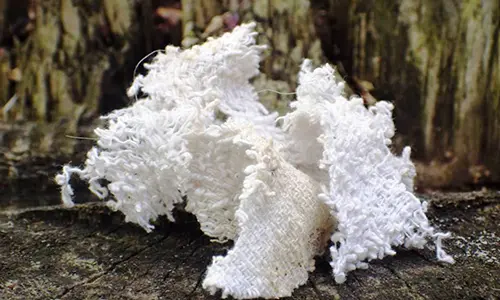
Gravel
Gravel usually shows up at the top of the filter. It catches big things like bits of leaves, sticks, clumps of dirt, and bird droppings from a roof when you collect rainwater.
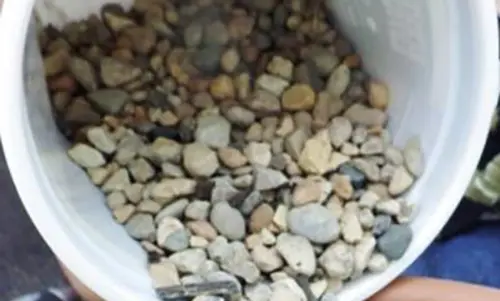
Sand
Sand is the fine filter. It captures the smallest particles suspended in water as the water percolates through your filter.
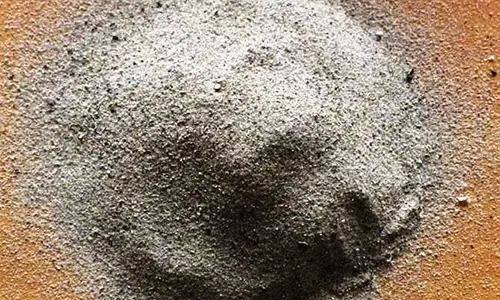
Charcoal
Charcoal is the champ when it comes to water filtration. It’s easy to make your own and you should crush it into small bits and powder. The fabric at the bottom is mainly used to catch charcoal pieces and powder. This helps keep your water clear.
Charcoal stabilizes the taste and goes a long way to making natural water potable or drinkable. But remember, clear water does not always equal pure water -boil it or treat it before drinking.
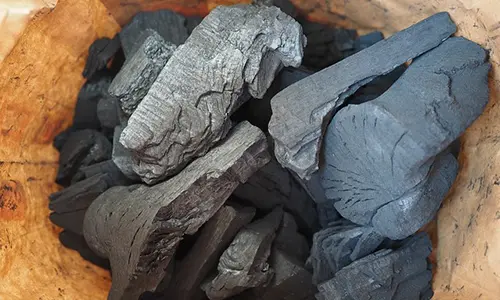
The Best DIY Water Filters
A great DIY water purification system combines filtration and disinfection. You can use a homemade sand and charcoal filter to remove dirt, then boil or add bleach to kill germs. A solar still is another option—it uses the sun to evaporate and purify water, leaving contaminants behind.
Based on my tests, here are a few ways to design and build a water filter:
The 2-liter Plastic Bottle Filter 
This DIY water filter begins with a 2-liter plastic bottle. The bottom or base is cut and the bottle is inverted. Fabric is wadded into the bottom and a piece of fabric is attached to the bottom of the inverted bottle. This is followed by a layer of charcoal, a layer of gravel, and a layer of sand and topped with a layer of gravel.
Dirty, cloudy water is gently poured into the top and gravity goes to work drawing the water down through the layers. As the water percolates down, it clarifies until a container under the filter is filled with clear water. But remember. Just because it’s clear doesn’t mean it’s purified. Boil it!
The “Sandwich Bag” Water Filter
I recently joined this Wilderness Survival Academy and one of the lessons was to learn how to filter water using a sandwich bag. This is, of course, for survival situations, but I thought I should share it with you—you never know when this skill might come in handy. Remember, a crisis is no longer a crisis if you know how to survive in the wild.
To do this, cut off one corner of the plastic bag and remove all the bark from a small branch. Plug the hole, then make another small hole near the top of the bag so you can hang it. The branch will start filtering the water, just like it does for the tree.
The Emergency Soda Bottle Filter
In an emergency you can improvise a water filter from an empty plastic bottle. This filter is made from a water bottle. It’s the same concept. The bottom of the bottle is cut off and a piece of fabric is attached to the bottom of the inverted bottle.
3 layers starting with charcoal followed by sand and topped with gravel make an effective filter. Here again, this will clarify cloudy or muddy water but it will still require boiling or other purification methods.
Coffee Filter on Steroids
Something as simple as a coffee filter can clarify and filter water. Just put the coffee filter into a colander or other porous support and dump some charcoal into the filter. Water slowly added will be neutralized by the charcoal and the coffee filter does the rest.
Best DIY Water Filters: Improvised Water Purification
- Boiling your filtered water is your best bet. However, the water should be boiled for at least 3 minutes to kill all bacteria.
- Chlorine bleach is another way to purify water but measure carefully. Here’s a chart with general recommendations:
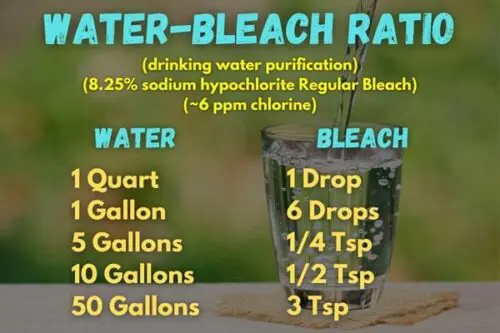
- Iodine is another way to purify water but once again, make sure you get the proportions right. Pure iodine is highly toxic and so is bleach so measure carefully. The standard recommendation is 5 drops to one liter of water.
Both chlorine and iodine can impart an off taste to water. The good news is that exposure to the sun neutralizes chlorine and if the container is sealed it will retain its purity. The same is not true for iodine but there are tablets that neutralize the taste of iodine. If you think ahead and buy iodine-neutralizing tablets, you might as well get a commercial water filter.
The biggest telegram that we’ve repeated is boil it, boil it, boil it. Polluted water can make you very sick and even the clearest, filtered water can be polluted.
Storage
After going through all the trouble of harvesting, filtering, and purifying water it makes sense to store some of it. Empty 1-gallon plastic milk jugs are a good place to start.
They are food safe and if you simply collect them over time -free with every gallon of milk you buy. Just make sure they are well rinsed with hot water and store them in a cool, dark place. If taking care of your water stockpile sounds like too much work, you can always try this DIY backpack-sized water generator.
You Never Know
The simplest solution to water filtration is to just buy a commercial water filter. You never know when you might face a wilderness survival situation. An unexpected bugout could leave you without your best plans.
At times like these, it’s good to know how to make a water filter. This helps meet a basic survival need: clear, pure water.
DIY Ingenious Rainwater Harvesting Systems
The Only Way To Survive In a World Without Water (Video)
I Tried Drinking Water From My Stockpile and This Is What Happened

